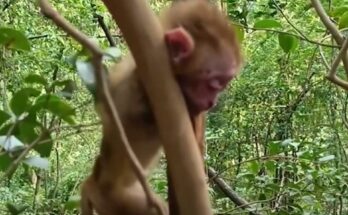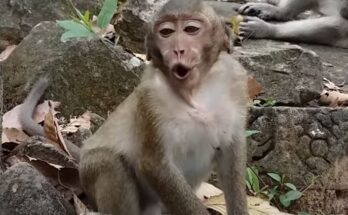The life of a monkey that is blind in both eyes is a profoundly challenging and sorrowful existence. Vision is crucial for monkeys, as it allows them to navigate their environment, find food, recognize threats, and maintain social bonds within their groups. Without sight, such a monkey faces significant struggles in its daily life, relying heavily on its other senses like touch, smell, and hearing to adapt. These compensatory abilities, while remarkable, can never fully replace the clarity and awareness that vision provides.
In the wild, blindness often leaves a monkey vulnerable to predators, as it cannot detect dangers quickly or flee effectively. Foraging for food becomes a daunting task, as it must depend on its sense of smell and memory to locate sustenance. Socially, the monkey might find itself isolated or struggling to keep up with its troop, which often moves swiftly through dense forests. This disconnection can result in loneliness, as the monkey may have difficulty interpreting social cues or participating in group dynamics.
In captivity, a blind monkey might fare slightly better with care and support, as zookeepers or caregivers can provide a safe environment, consistent food, and companionship. However, the psychological toll of blindness, especially in such intelligent and social animals, remains significant. The monkey may experience stress, frustration, or confusion, particularly in unfamiliar or noisy surroundings.
Ultimately, the life of a blind monkey highlights the fragility of existence for animals that rely so heavily on sight. It serves as a poignant reminder of the struggles faced by wildlife in both natural and human-altered environments, underscoring the importance of empathy and conservation efforts to protect vulnerable animals.


